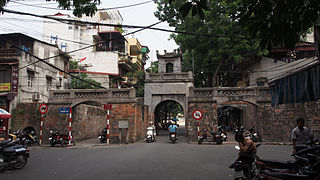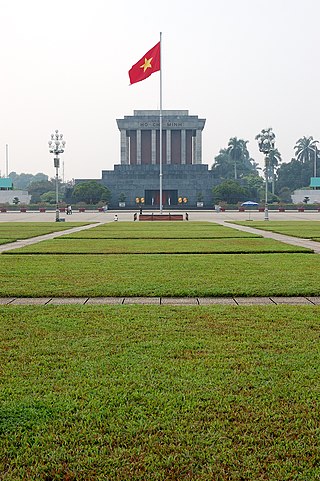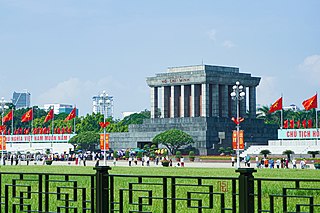Self-guided Sightseeing Tour #6 in Hanoi, Vietnam
Legend
Guided Free Walking Tours
Book free guided walking tours in Hanoi.
Guided Sightseeing Tours
Book guided sightseeing tours and activities in Hanoi.
Tour Facts
5.6 km
61 m
Experience Hanoi in Vietnam in a whole new way with our self-guided sightseeing tour. This site not only offers you practical information and insider tips, but also a rich variety of activities and sights you shouldn't miss. Whether you love art and culture, want to explore historical sites or simply want to experience the vibrant atmosphere of a lively city - you'll find everything you need for your personal adventure here.
Activities in HanoiIndividual Sights in HanoiSight 1: O Quan Chuong City Gate
O Quan Chuong (also known as Dong Ha Umbrella, Thanh Ha Umbrella, Cua Dong Umbrella, the literal name is Dong Ha Mon, is an umbrella gate of ancient Hanoi, located in the east of the citadel surrounding the Thang Long Citadel, built in the 10th year of Canh Hung, in the third year of Gia Long it was rebuilt and retains the same style to this day. This is one of the 21 remaining gates of the old Thang Long citadel.
Sight 2: Ba Dinh Square
Book Free Tour*Ba Đình Square is the name of a square in Hanoi where president Ho Chi Minh read the Proclamation of Independence of the Democratic Republic of Vietnam on September 2, 1945. It is named after the Ba Đình Uprising, an anti-French rebellion that occurred in Vietnam in 1886–1887 as part of the Cần Vương movement. When Ho Chi Minh died, the granite Ho Chi Minh Mausoleum was built here to display his embalmed body. It remains a major site of tourism and pilgrimage.
Sight 3: Presidential Palace
The Presidential Palace of Vietnam, located in the city of Hanoi, currently is the official residence of the president of Vietnam. Before 1954, it was named the Palace of the Governor-General of Indochina .
Sight 4: Ho Chi Minh Museum
Book Ticket*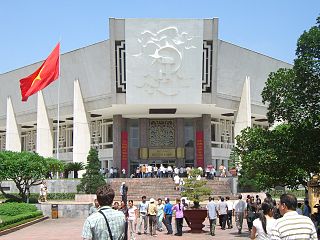
The Ho Chi Minh Museum is located in Hanoi, Vietnam. Constructed in the 1990s, it is dedicated to the late Vietnamese leader Ho Chi Minh and Vietnam's revolutionary struggle against foreign powers.
Sight 5: One Pillar Pagoda
The One Pillar Pagoda, formally belongs to an architecture complex called Diên Hựu tự which means 'pagoda of extended blessings'. The pagoda is a historic Buddhist temple in the central Ba Đình district, Hanoi, the capital of Vietnam. The most famous part of this architecture complex is Liên Hoa Đài (蓮花臺) means 'the lotus pedestal' which is a temple with special structure: a building laid on one pillar. The original pagoda was built in 1049, had some additions and was perfected in 1105. It is regarded alongside the Hương Temple, as one of Vietnam's two most iconic temples.
Sight 6: Ho Chi Minh Mausoleum
The President Ho Chi Minh Mausoleum is a mausoleum which serves as the resting place of Vietnamese revolutionary leader and President Ho Chi Minh in Hanoi, Vietnam. It is a large building located in the center of Ba Dinh Square, where Ho, Chairman of the Workers' Party of Vietnam from 1951 until his death in 1969, read the Declaration of Independence on 2 September 1945, establishing the Democratic Republic of Vietnam. It is open to the public every morning except Monday.
Sight 7: Archeological site of Thang Long Imperial Citadel
The Imperial Citadel of Thăng Long is a complex of historic buildings associated with the history of Vietnam located in the centre of Hanoi, Vietnam. Its construction began in 1010 and was completed in early 1011 under the reign of Emperor Lý Thái Tổ of the Lý dynasty.
Sight 8: Cua Bac Church
Cửa Bắc Church is a Roman Catholic church in Hanoi, Vietnam. Originally named as Church of Our Lady of the Martyrs, the church was built in 1932 by the French administration of Indochina as a part of the Hanoi's urban plan supervised by Ernest Hébrard. Today, Cửa Bắc Church is one of the three major churches of Hanoi, together with Hàm Long Church and Saint Joseph Cathedral. In November 2006, Cửa Bắc Church became the venue of a joint worship service of Vietnamese Catholics and Protestants with the participation of United States president George W. Bush, who was on an official visit to Vietnam.
Sight 9: Quan Thanh Temple
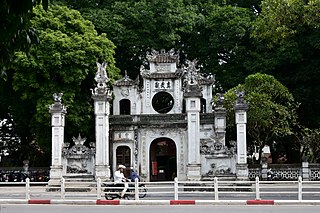
Quán Thánh Temple, also known as Trấn Vũ Temple, is a Taoist temple in Hanoi, Vietnam. Dated to the 11th century, the temple was dedicated to Xuan Wu, or Trấn Vũ in Vietnamese, one of the principal deities in Taoism. As one of the Four Sacred Temples of the capital, Quan Thánh Temple is located near West Lake in a ward of the same name: Quán Thánh Ward; and is one of the leading tourist attractions in Hanoi. The temple's name means Place of the Gods. The name of the long street running by the temple is also called 'Quán Thánh' street.
Share
Disclaimer Please be aware of your surroundings and do not enter private property. We are not liable for any damages that occur during the tours.
GPX-Download For navigation apps and GPS devices you can download the tour as a GPX file.
